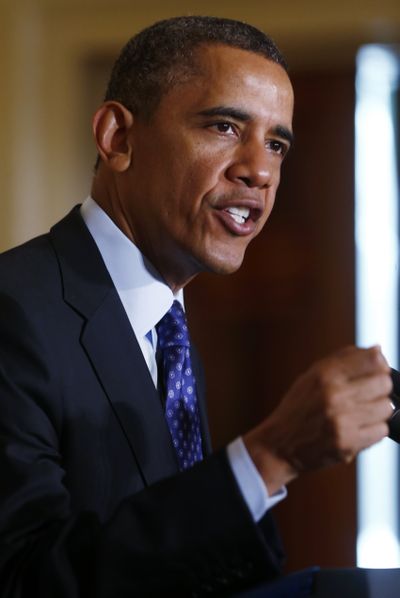Obama outlines his proposal for brain-mapping initiative
$110 million sought for research in 2014

WASHINGTON – Making good on a promise first hinted at during his State of the Union speech in February, President Barack Obama on Tuesday unveiled the broad outlines of a scientific initiative aimed at mapping the human brain. The project’s ambitious goals include understanding how the brain forms memories and controls human behavior; how it becomes damaged by conditions such as Parkinson’s disease and autism; and how it can be repaired when afflicted by Alzheimer’s disease, post-traumatic stress disorder and other illnesses.
The BRAIN initiative – short for Brain Research through Advancing Innovative Neurotechnologies – is modeled after the Human Genome Project, in which the federal government partnered with philanthropies and scientific entrepreneurs to identify and characterize the nearly 25,000 genes that make up human DNA.
“A human brain contains almost 100 billion neurons making trillions of connections,” Obama said Tuesday as he outlined the initiative in the East Room of the White House. In the absence of a detailed map of the brain’s complex circuitry and operating instructions that could help troubleshoot when the brain’s wiring goes awry, scientists often grope in the dark for therapies that can treat Alzheimer’s or autism or to reverse the effects of stroke, Obama said. “So there is this enormous mystery waiting to be unlocked.”
The funding available beyond this year for the BRAIN initiative remains unclear. Calling the “3 pounds of matter that sits between our ears” a mystery to be unraveled, Obama said his proposed budget of $110 million for fiscal year 2014 would “help get this project off the ground.” Private sector partners the Allen Institute for Brain Science, the Salk Institute for Biological Studies, the Howard Hughes Medical Institute and the Kavli Foundation have committed $158 million to the project.
Over five years of the Human Genome Project, the federal government invested $3.8 billion in the effort. But federal spending in the initiative’s first year was modest: $27.9 million.
In a bid to fend off opposition from budget-cutters on Capitol Hill and cast the initiative as an investment in the U.S. economy, the White House said that every federal dollar expended on the Human Genome Project went on to generate $141 in economic output.
“Ideas are what power our economy,” Obama said. “When we invest in the best ideas before anybody else does, our businesses and our workers can make the best products and deliver the best services before anybody else.”
If Obama’s proposed budget for the project is approved by Congress this year, the Defense Advanced Research Projects Agency, the small office within the Pentagon known as DARPA, will disburse about $50 million in grants under the BRAIN initiative next year. The National Institutes of Health will contribute $40 million, and the National Science Foundation $20 million.
Funding in future years will be negotiated yearly.
“Out of this is going to come a foundation of understanding the brain that we have dreamed of all through human history,” said Dr. Francis Collins, who was in charge of the government’s role in the Human Genome Project and is now director of the National Institutes of Health.